1998 Digital TV ahead of schedule
^top^
The National Association of Broadcasters
(NAB) announced that broadcasters would air digital television broadcasts
ahead of the schedule agreed upon by the NAB and the Federal Communications
Commission. The FCC had approved a plan ordering television broadcasters
in the country's largest markets to offer digital TV as of 01 November
1998. Some twenty-six broadcasters in the nation's largest markets
had volunteered to meet the deadline. However, on 06 October 1998,
the NAB announced that forty-one stations would be ready to broadcast
as of 01 November. |
1996 This year's IgNobel
Prizes are awarded in the following fields:
NUTRITION
John
Martinez of J. Martinez & Company in Atlanta, for Luak
Coffee,
the world's most expensive coffee, which is made from coffee beans ingested
and excreted by the luak (aka, the palm civet), a bobcat-like animal native
to Indonesia.
PHYSICS
D.M.R. Georget, R. Parker, and A.C. Smith, of the Institute
of Food Research, Norwich, England, for their rigorous analysis of soggy
breakfast cereal, published in the report entitled 'A Study of the Effects
of Water Content on the Compaction Behaviour of Breakfast Cereal Flakes."
ECONOMICS
Awarded jointly to Nick
Leeson and his superiors at Barings
Bank and to Robert
Citron of Orange
County, California, for using the calculus of derivatives
to demonstrate that every financial institution has its limits.
MEDICINE
Marcia E. Buebel, David S. Shannahoff-Khalsa, and Michael R. Boyle, for
their invigorating study entitled "The Effects of Unilateral
Forced Nostril Breathing on Cognition."
LITERATURE
David B. Busch and James
R. Starling, of Madison Wisconsin, for their deeply penetrating research
report, "Rectal
foreign bodies: Case
Reports and a Comprehensive Review of the World's Literature."
The citations include reports of, among other items: seven light bulbs;
a knife sharpener; two flashlights; a wire spring; a snuff box; an oil can
with potato stopper; eleven different forms of fruits, vegetables and other
foodstuffs; a jeweler's saw; a frozen pig's tail; a tin cup; a beer glass;
and one patient's remarkable ensemble collection consisting of spectacles,
a suitcase key, a tobacco pouch and a magazine.
PEACE
The Taiwan National Parliament, for demonstrating that politicians gain
more by punching,
kicking and gouging each other than by waging war against other nations.
PSYCHOLOGY
Shigeru
Watanabe, Junko Sakamoto, and Masumi Wakita, of Keio
University, for their success in training pigeons to discriminate between
the paintings of Picasso and those of Monet. [REFERENCE: "Pigeons'
Discrimination of Paintings by Monet and Picasso," Journal
of the Experimental Analysis of Behavior vol. 63, 1995, pp. 165-174.]
PUBLIC HEALTH
Martha Kold Bakkevig of Sintef
Unimed in Trondheim, Norway, and Ruth Nielson of the Technical
University of Denmark, for their exhaustive study, "Impact of Wet Underwear
on Thermoregulatory Responses and Thermal Comfort in the Cold."
DENTISTRY
Robert H. Beaumont, of Shoreview,
Minnesota, for his incisive study "Patient Preference for Waxed or Unwaxed
Dental Floss."
CHEMISTRY
Bijan
Pakzad of Beverly
Hills, for creating DNA
Cologne and DNA PERFUME,
neither of which contain deoxyribonucleic
acid, and both of which come in a triple helix
bottle.
1995 Boeing machinists go on strike
^top^
Thirty-two thousand Boeing machinists
hit the picket lines in three states on this day to call for a pay
raise and job guarantees. After years of frustration and failed walkouts,
labor had little reason to be hopeful about the strike's outcome,
but workers successfully halted production on planes and forced airlines
to roll back their schedules. As a result, sixty-nine days after the
beginning of the strike, union officials agreed to a new contract
that met the machinists' demands. The deal came complete with a pay
increase that averaged an estimated $19,200 in wages and benefits
over four years, safeguards against job cutbacks, and a full extension
of health premiums through the end of 1998. Following the agreement,
giddy union officials rushed to declare victory. Spokesman Matt Bates
called the agreement a "slam dunk" for the machinists and chief negotiator
Bob Gregory hailed the episode as proof that the labor movement was
"alive and well.” . |
1994 This year's IgNobel
Prizes are awarded in the following fields:
BIOLOGY
W. Brian Sweeney, Brian Krafte-Jacobs, Jeffrey W. Britton, and Wayne Hansen,
for their breakthrough study, "The Constipated
Serviceman: Prevalence Among Deployed US Troops," and especially for their
numerical analysis of bowel movement frequency.
PEACE
John
Hagelin of Maharishi University
and The Institute of Science, Technology and Public Policy, promulgator
of peaceful thoughts, for his experimental conclusion that 4000 trained
meditators caused an 18% decrease in violent crime in Washington,
D.C. [Would 4000 trained mediators have caused an 81% decrease?]
MEDICINE
This prize is awarded in two parts. First, to Patient X, formerly of the
US Marine Corps, valiant victim of a venomous bite from his
pet rattlesnake, for his determined use of electroshock therapy -- at his
own insistence, automobile sparkplug wires were attached to
his lip, and the car engine revved to 3000 rpm for five minutes.
Second, to Dr.
Richard C. Dart of the Rocky Mountain Poison Center and Dr. Richard
A. Gustafson of The University of Arizona Health Sciences Center, for their
well-grounded medical report: "Failure of Electric
Shock Treatment for Rattlesnake Envenomation."
ENTOMOLOGY
Robert A. Lopez of Westport, NY, valiant veterinarian and friend of all
creatures great and small, for his series of experiments in obtaining ear
mites from cats, inserting them into his own ear, and carefully observing
and analyzing the results.
PSYCHOLOGY
Lee
Kuan Yew, former
Prime Minister of Singapore, practitioner of the psychology of negative
reinforcement, for his thirty-year study of the effects of punishing three
million citizens of Singapore whenever they spat,
chewed gum, or fed pigeons.
PHYSICS
The Japan
Meterological Agency, for its seven-year study of whether earthquakes
are caused by catfish wiggling their tails. [to be followed by the complementary
study of whether earthquakes cause catfish to wiggle their tails?]
LITERATURE
L. Ron Hubbard, ardent author of science fiction and founding father of
Scientology, for his crackling Good Book, Dianetics, which is highly
profitable to mankind or to a portion thereof.
CHEMISTRY
Texas State Senator Bob
Glasgow, wise writer of logical legislation, for sponsoring the 1989
drug control law which makes it illegal to purchase beakers, flasks,
test tubes, or other laboratory
glassware without a permit.
ECONOMICS
Jan
Pablo Davila of Chile, tireless trader of financial futures and former
employee of the state-owned Codelco
Company, for instructing his computer to "buy" when he meant "sell,"
and subsequently attempting to recoup his losses by making increasingly
unprofitable trades that ultimately lost 0.5%
of Chile's gross national product. Davila's relentless achievement inspired
his countrymen to coin a new verb: " davilar," meaning, "to botch things
up royally."
MATHEMATICS
The Southern
Baptist Church of Alabama, mathematical measurers of morality, for their
county-by-county estimate of how many Alabama citizens will go to Hell
if they don't repent. [additional
details.]
1991 Reports surface that a former
personal assistant to US Supreme Court nominee Clarence Thomas, University
of Oklahoma law professor Anita Hill, had accused Thomas of sexually harassing
her.
1979 Pope John Paul II is 1st Pope to visit
the White House
1976 John Hathaway completes a
bicycle tour of every continent in the world, cycling 81'400 km
1976 In his second presidential campaign debate with Jimmy Carter,
President Ford asserted there was "no Soviet domination of eastern Europe."
(Ford later conceded he'd misspoken.)
1973 Yom Kippur War begins
^top^
Hoping to win back territory lost to
Israel during the third Arab-Israeli war, Egyptian and Syrian forces
launch a surprise attack against Israel on the Jewish holy day of
Yom Kippur. Egyptian troops sweep deep down into the Sinai, while
Syria struggles to throw Israel out of the Golan Heights. Israel eventually
reverses the initial Arab gains, but suffers heavy losses before a
cease-fire takes effect two weeks later. On October 17, Western support
for Israel in the Yom Kippur War leads eleven Arab oil-producing nations,
with the support of OPEC, to begin a crippling oil embargo against
the US, Great Britain, and several other nations.
The surprise attack by Egyptian and Syrian forces on Israel throws
the Middle East into turmoil and threatens to bring the United States
and the Soviet Union into direct conflict for the first time since
the Cuban Missile Crisis in 1962. Though actual combat did not break
out between the two nations, the events surrounding the Yom Kippur
War seriously damaged US-Soviet relations and all but destroyed President
Richard Nixon's much publicized policy of détente.
When
the fourth Arab-Israeli war began on October 6, 1973, many of Israel's
soldiers were away from their posts observing Yom Kippur, and the
Arab armies made impressive advances with their up-to-date Soviet
weaponry. Iraqi forces soon joined the war, and Syria received support
from Jordan. After several days, Israel was fully mobilized, and the
Israel Defense Forces began beating back the Arab gains at a heavy
cost to soldiers and equipment. A US airlift of arms aided Israel's
cause, but President Richard Nixon delayed the emergency military
aid for seven days as a tacit signal of US sympathy for Egypt. In
late October, an Egyptian-Israeli cease-fire was secured by the United
Nations.
Initially, it appeared
that Egypt and Syria would emerge victorious from the conflict. Armed
with up-to-date Soviet weaponry, the two nations hoped to avenge their
humiliating defeat in the Six-Day War of 1967. Israel, caught off
guard, initially reeled under the two-front attack, but Israeli counterattacks
turned the tide, aided by massive amounts of US military assistance,
as well as disorganization among the Syrian and Egyptian forces. The
Syrians were driven back, with Israeli troops seizing the strategically
important Golan Heights. Egyptian forces fared even worse: retreating
back through the Sinai Desert, thousands of their troops were surrounded
and cut off by the Israeli army.
Secretary of State Henry Kissinger, together with his Soviet counterparts,
eventually arranged a shaky cease-fire. When it became clear that
Israel would not give up its siege of the Egyptian troops (low on
food and medicine by this time), the Soviets threatened to take unilateral
action to rescue them. Tempers flared both in Washington and Moscow;
US military forces went to a Stage 3 alert (Stage 5 is the launch
of nuclear attacks). The Soviets backed down on their threat but the
damage to relations between the two nations was serious and long lasting.
Kissinger worked furiously to bring about a peace settlement between
Israel and Syria and Egypt. In what came to be known as "shuttle diplomacy,"
the secretary of state flew from nation to nation hammering out the
details of the peace accord. Eventually, Israeli troops withdrew from
some of their positions in both the Sinai and Syrian territory, while
Egypt promised to forego the use of force in its dealings with Israel.
Syria grudgingly accepted the peace plan, but remained adamantly opposed
to the existence of the Israeli state.
The
surprise attack by Egyptian and Syrian forces on Israel throws the
Middle East into turmoil and threatens to bring the United States
and the Soviet Union into direct conflict for the first time since
the Cuban Missile Crisis in 1962. Though actual combat did not break
out between the two nations, the events surrounding the Yom Kippur
War seriously damaged US-Soviet relations and all but destroyed President
Richard Nixon's much publicized policy of detente. Initially, it appeared
that Egypt and Syria would emerge victorious from the conflict. Armed
with up-to-date Soviet weaponry, the two nations hoped to avenge their
humiliating defeat in the Six-Day War of 1967. Israel, caught off
guard, initially reeled under the two-front attack, but Israeli counterattacks
turned the tide, aided by massive amounts of US military assistance,
as well as disorganization among the Syrian and Egyptian forces.
The Syrians were driven back, with
Israeli troops seizing the strategically important Golan Heights.
Egyptian forces fared even worse: retreating back through the Sinai
Desert, thousands of their troops were surrounded and cut off by the
Israeli army. Secretary of State Henry Kissinger, together with his
Soviet counterparts, eventually arranged a shaky cease-fire. When
it became clear that Israel would not give up its siege of the Egyptian
troops (low on food and medicine by this time), the Soviets threatened
to take unilateral action to rescue them.
Tempers flared both in Washington and Moscow; US military forces went
to a Stage 3 alert (Stage 5 is the launch of nuclear attacks). The
Soviets backed down on their threat but the damage to relations between
the two nations was serious and long lasting. Kissinger worked furiously
to bring about a peace settlement between Israel and Syria and Egypt.
In what came to be known as "shuttle diplomacy," the secretary of
state flew from nation to nation hammering out the details of the
peace accord. Eventually, Israeli troops withdrew from some of their
positions in both the Sinai and Syrian territory, while Egypt promised
to forego the use of force in its dealings with Israel. Syria grudgingly
accepted the peace plan, but remained adamantly opposed to the existence
of the Israeli state.
Although
Egypt had again suffered military defeat at the hands of its Jewish
neighbor, the initial Egyptian successes greatly enhanced Sadat's
prestige in the Middle East and provided him with an opportunity to
seek peace. In 1974, the first of two Egyptian-Israeli disengagement
agreements providing for the return of portions of the Sinai to Egypt
were signed, and in 1979 Sadat and Israeli Prime Minister Menachem
Begin signed the first peace agreement between Israel and one of its
Arab neighbors. In 1982, Israel fulfilled the 1979 peace treaty by
returning the last segment of the Sinai Peninsula to Egypt.
For Syria, the Yom Kippur War was a
disaster. The unexpected Egyptian-Israeli cease-fire exposed Syria
to military defeat, and Israel seized even more territory in the Golan
Heights. In 1979, Syria voted with other Arab states to expel Egypt
from the Arab League. On October 6, 1981, Sadat was assassinated by
Muslim extremists in Cairo while viewing a military parade commemorating
the anniversary of the Yom Kippur War.
Israel's
stunning victory in the Six-Day War of 1967 had left the Jewish nation
in control of territory four times its previous size. Egypt lost the
61'000-square-kilometer Sinai Peninsula and the Gaza Strip, Jordan
the West Bank and East Jerusalem, and Syria the strategic Golan Heights.
When Anwar el-Sadat became president of Egypt in 1970, he found himself
leader of an economically troubled nation that could ill afford to
continue its endless crusade against Israel. He wanted to make peace
and thereby achieve stability and recovery of the Sinai, but after
Israel's 1967 victory it was unlikely that Israel's peace terms would
be favorable to Egypt. So Sadat conceived of a daring plan to attack
Israel again, which, even if unsuccessful, might convince the Israelis
that peace with Egypt was necessary.
In 1972, Sadat expelled 20'000 Soviet advisers from Egypt and opened
new diplomatic channels with Washington, which, as Israel's key ally,
would be an essential mediator in any future peace talks. He formed
a new alliance with Syria, and a concerted attack on Israel was planned.
|
1967 Vietnam:
US jets strike targets in North Vietnam
^top^
US Navy pilots fly 34 missions as they again strike the Chien Chiang
and Lang Son bridges near the Chinese border, another bridge 39 miles
northeast of Hanoi, a railroad yard near Mo Trang, and two anti-aircraft
sites south of Dong Hoi. Other jets attacked the Nam Dinh power plant
that lay 45 miles southwest of Haiphong; a railway and highway bridge
24 miles southeast of Hanoi; and eight buildings in the Yen Bac military
storage area.
These raids were
all part of Operation Rolling Thunder, which had been initiated in
March 1965 and became the longest bombing campaign ever conducted
by the United States Air Force. It was designed to destroy North Vietnam's
industrial base and war-making capability. During the protracted campaign,
more than 643,000 tons of bombs fell on North Vietnam, destroying
65 percent of North Vietnam's petroleum storage capacity and an estimated
60 percent of its power-generating capability. Despite these results,
Rolling Thunder has generally been assessed as a failure.
For a number of reasons, conventional airpower used on North Vietnam
did not have the desired impact on the unconventional war being fought
in South Vietnam. First, North Vietnam was primarily a pre-industrial,
agricultural society without major industrial targets. Second, the
overall effectiveness of the bombing campaign was hampered by political
constraints that limited targeting and other operational planning
factors. Third, and perhaps most important, the North Vietnamese were
a determined people who were prepared to continue fighting as long
as it took to achieve their war aims. In essence, the United States
was fighting a limited war, but the North Vietnamese were fighting
a total war to the finish. |
1966 Hanoi insists the United States must end its bombings
before peace talks can begin.
1961 Kennedy urges building
of bomb shelters ^top^
US president John F. Kennedy, speaking
on civil defense, advises US families to build or buy a bomb shelter
to protect them from atomic fallout in the event of a nuclear exchange
with the Soviet Union. Kennedy also declares that the US civil defense
program will soon begin ensuring such protection for every American.
Only one year later, true to Kennedy's fears, the world hovers on
the brink of full-scale nuclear war when the Cuban Missile Crisis
erupts over Soviet placement of nuclear missiles in Cuba. During the
tense six-day crisis, many Americans across the country prepare for
nuclear war, buying up canned goods and completing last-minute work
on their nuclear shelters. |
1949 Iva Toguri D'Aquino (Tokyo Rose) sentenced to 10
years & $10,000 fine
1949 US President Truman
signed the Mutual Defense Assistance Act, totaling $1.3 billion in military
aid to NATO countries.
1945 Top French traitor attempts
suicide ^top^
Former French premier and Vichy collaborator
Pierre Laval tries to kill himself on the day he
is to be executed for treason. He fails. Laval served as premier of
France twice, the second time from June 1935 to January 1936, but
fell from power primarily because of his appeasement of Italy after
the invasion and occupation of Ethiopia by Mussolini and his fascist
regime in 1935.
Upon the German
invasion of France in 1940, Laval, ever the opportunist, saw a chance
to re-establish himself in office by supporting a puppet government
headed by marshal Henri Philippe Pétain, who, when he acceded
to the position of premier in June 1940, rewarded Laval by making
him deputy head of state and foreign minister. Laval was always more
slavish in his devotion to his German masters than was Pétain;
for example, Laval began secret negotiations for a formal collaboration
with Germany, convinced that the future lay in the hands of the Axis
power.
Pétain finally
fired him in December 1940. But the Germans questioned Pétain's
double loyalty and pressured him to reinstate Laval. Pétain
fell further from German favor, and when Hitler's forces occupied
France in 1942, Laval, wanting to reassure Germany of his loyalty,
began sending French workers to Germany and stripping French Jews
of their rights. He also helped the Nazis capture and deport non-French
Jews. He openly announced that he wished for a German victory. “An
American victory would mean victory for the Jews and the communists.”
As the end for Hitler grew near,
Laval fled first to Germany, then to Spain, then to Austria, where
he was arrested and sent back to France and was tried, as Pétain
was also, on the charge of treason. Laval defended his actions, believing
he had done nothing wrong. He was sentenced to be shot by firing squad
on October 6, 1945, but swallowed cyanide before they could come for
him. A physician saved his life--just in time for Laval to be executed
a little less than two weeks later. |
1941 German troops renew their offensive against Moscow
1939 In an address to the Reichstag, Adolf Hitler
denies having any intention of pursuing war against France and Britain.
— Plan de paix de Hitler (rejeté par Chamberlain le 12)
1939
Reddition des derniers combattants polonais à Koch
1928
Chiang Kai-Shek becomes president of China
1927
The Jazz Singer, 1st movie with a sound track, premieres
(NYC) with popular entertainer Al Jolson singing and dancing in black-face.
1926 Cord acquires Duesenberg
^top^
Automobile manufacturer E. L. Cord
had a vision: his company was going to produce the finest and most
luxurious automobile the world had ever seen. Already a financial
success with his prestigious Auburn and Cord lines, Cord wanted to
go one step further. In the early 1920's, two German-American engineers
from Iowa, Frederick and August Duesenberg, had begun to command the
automotive world's attention with their exquisitely constructed racing
cars. In 1921, a Duesenberg car won the 24-hour race in Le Mans, France,
and in 1924 and 1925 their cars won the Indy 500. In 1926, E. L. Cord
offered to purchase the Duesenberg company, with the sole purpose
of obtaining the design expertise of Fred Duesenberg -- the one man
he believed could construct the grand automobile he envisioned.
On this day in 1926, Duesenberg was
incorporated into the Auburn-Cord company, and the Duesenberg brothers
began working toward Cord's dream. Two years later, Cord introduced
the Duesenberg Model J to the American public. It was of typical Duesenberg
design, but on a grander scale. No other automobile of the time could
approach the sheer power of the Model J. The engine displaced 420-cubic
inches and sported twin overhead camshafts that operated four valves
per cylinders, all adding up to an impressive 165 hp. And in elegance
it was incomparable - the chassis was huge and the bodies were custom
built by the leading coach-builders of the day. At a price tag beginning
around $17'000, the Model J was a true luxury car, and movie stars
and millionaires soon vied for ownership of "Duesies.” But Cord's
Duesenberg line could not survive the difficulties of the Depression,
and it folded along with the rest of Auburn-Cord in 1937. Yet, for
a short time, Cord had accomplished his dream of grandeur, and the
Duesenberg Model J is still widely regarded as one of the finest automobiles
ever manufactured. |
1923 USSR adopts experimental calendar
1911
The first transpacific radio conversation takes place over over 10,000 km
between a Japanese steamer and a wireless station in San Francisco.
1908 Austria annexes Bosnia & Herzegovina
1890 Mormon Church outlaws polygamy
1889
Thomas Edison shows his 1st motion picture
1886
Start of the Sherlock Holmes adventure The
Resident Patient
1873 Début du procès du
maréchal Achille-François Bazaine, 62 ans, pour sa capitulation sans
combat à Metz avec 140'000 hommes, qui complète la défaite
dans la guerre de 1870 engagée par le second Empire contre la Prusse. Il
sera condamné le 10 décembre à la dégradation et à mort par le conseil de
guerre, que préside le duc d'Aumale. Sa peine sera commuée par le président
de la République Mac-Mahon en 20 ans de prison. Il parviendra à s'évader
le 9 août 1874 et finira sa vie en exil en Espagne, où il meurt
le 28 septembre 1888..
1866 The Reno brothers--Frank,
John, Simeon and William--commit
the US's first train robbery near Seymore, Indiana
netting $10'000. (However it was preceded by a train burglary.
Exactly nine months before, bandits entered an Adams Express car en route
to Boston from New York and stole over half a million dollars from safes
on the unoccupied car.) [MORE]
1866 Henry House drives his
steam car out of town ^top^
In the first use of a steam car to
garner national attention, brothers Henry and James House transported
a party of men in their House steam car from Bridgeport, Connecticut,
to Stratford, Connecticut, on this day. With the assistance of his
brother James, inventor Henry House had constructed the House Steamer,
one of America's first steam cars, earlier in the year. After testing
their invention in and around Bridgeport for several months, the brothers
approved the first official journey for the House steam car -- a 10
km trip to Stratford to watch a vessel launching. |
1864 Cavalry engagement at Brock's Gap, Virginia
1814 Alexander J. Dallas took the oath to become the United
States' sixth Secretary of the Treasury on this day. Dallas' tenure came
to a close in 1816
1801 Napoleon Bonaparte imposes
a new constitution on Holland.
1788 The Polish Diet
decides to hold a four year session.
1781 Americans
and French begin siege of Cornwallis at Yorktown; last battle of the Revolutionary
War
1696 Savoy Germany withdraws from the Grand
Alliance.
1683 First Mennonites arrive
in America ^top^
Encouraged by William Penn's offer
of 2000 hectares of land in the colony of Pennsylvania and the freedom
to practice their religion, the first Mennonites arrive in America
aboard the Concord. Led by Francis Daniel Pastorious and
Johann Kelpius, thirteen German and Dutch families traveled from Krefeld,
Germany, to the British colony, establishing a settlement called Germantown,
now a neighborhood in present-day Philadelphia, Pennsylvania. They
were among the first Germans to settle in the American colonies.
The Mennonites, members of a Protestant
sect founded by Menno Simons in the 16th century, were widely persecuted
in Europe. Seeking religious freedom, Mennonite Francis Daniel Pastorious
led a group from Krefeld, Germany, to Pennsylvania in 1683 and founded
Germantown, the pioneer German settlement in America and now part
of the city of Philadelphia. Numerous other German groups followed,
and by the American Revolution there were 100,000 Germans in William
Penn's former colony, more than a third of Pennsylvania's total population
at the time. |
1520 Martin Luther, 36, publishes "Prelude on the Babylonian
Captivity of the Church," which attacks the entire sacramental system of
the Catholic Church.
1014 The Byzantine Emperor
Basil earns the title "Slayer of Bulgars" after he orders the blinding of
15'000 Bulgarian soldiers.
0891 Formosus begins
his reign as Pope.
|
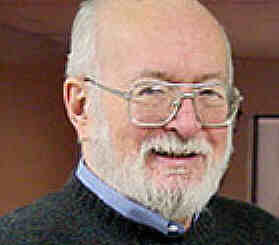
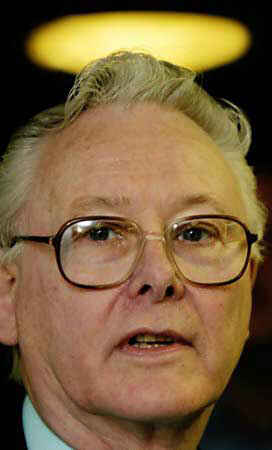 On
a 06 October:
On
a 06 October: 





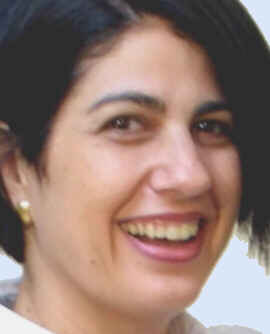
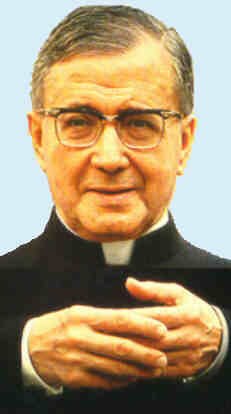
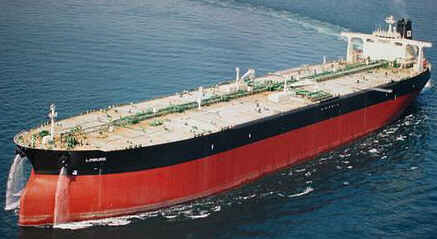 Deaths
Deaths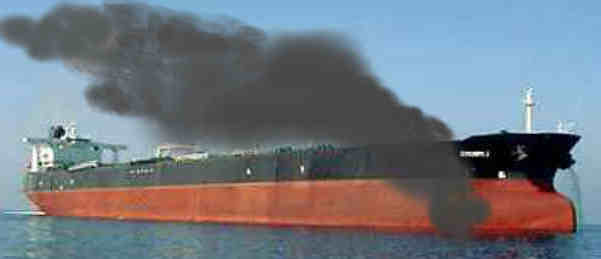 2002 Hani Beni Maniyeh, 24, Palestinian from Akrabeh near
Nablus, West Bank, bleeds to death after being hit from the back in the
femoral artery by gunfire from a group of 10 Israeli settlers from the Gidonim
and Itamar enclaves who at 09:00 attacked Palestinians harvesting olives
in an orchard 1.5 km from Itamar and 3 km from Akrabeh. Settlers have been
attacking Palestinians harvesters since the olive harvest began on 02 October.
Akrabeh residents are unable to get to 70% of their lands because of these
attacks. The Israeli army and police do nothing to stop the murderous settlers.
The al-Aqsa intifada body count is now “at least” At least 1584
Palestinians and 602 Israelis, according to Reuters.
2002 Hani Beni Maniyeh, 24, Palestinian from Akrabeh near
Nablus, West Bank, bleeds to death after being hit from the back in the
femoral artery by gunfire from a group of 10 Israeli settlers from the Gidonim
and Itamar enclaves who at 09:00 attacked Palestinians harvesting olives
in an orchard 1.5 km from Itamar and 3 km from Akrabeh. Settlers have been
attacking Palestinians harvesters since the olive harvest began on 02 October.
Akrabeh residents are unable to get to 70% of their lands because of these
attacks. The Israeli army and police do nothing to stop the murderous settlers.
The al-Aqsa intifada body count is now “at least” At least 1584
Palestinians and 602 Israelis, according to Reuters.